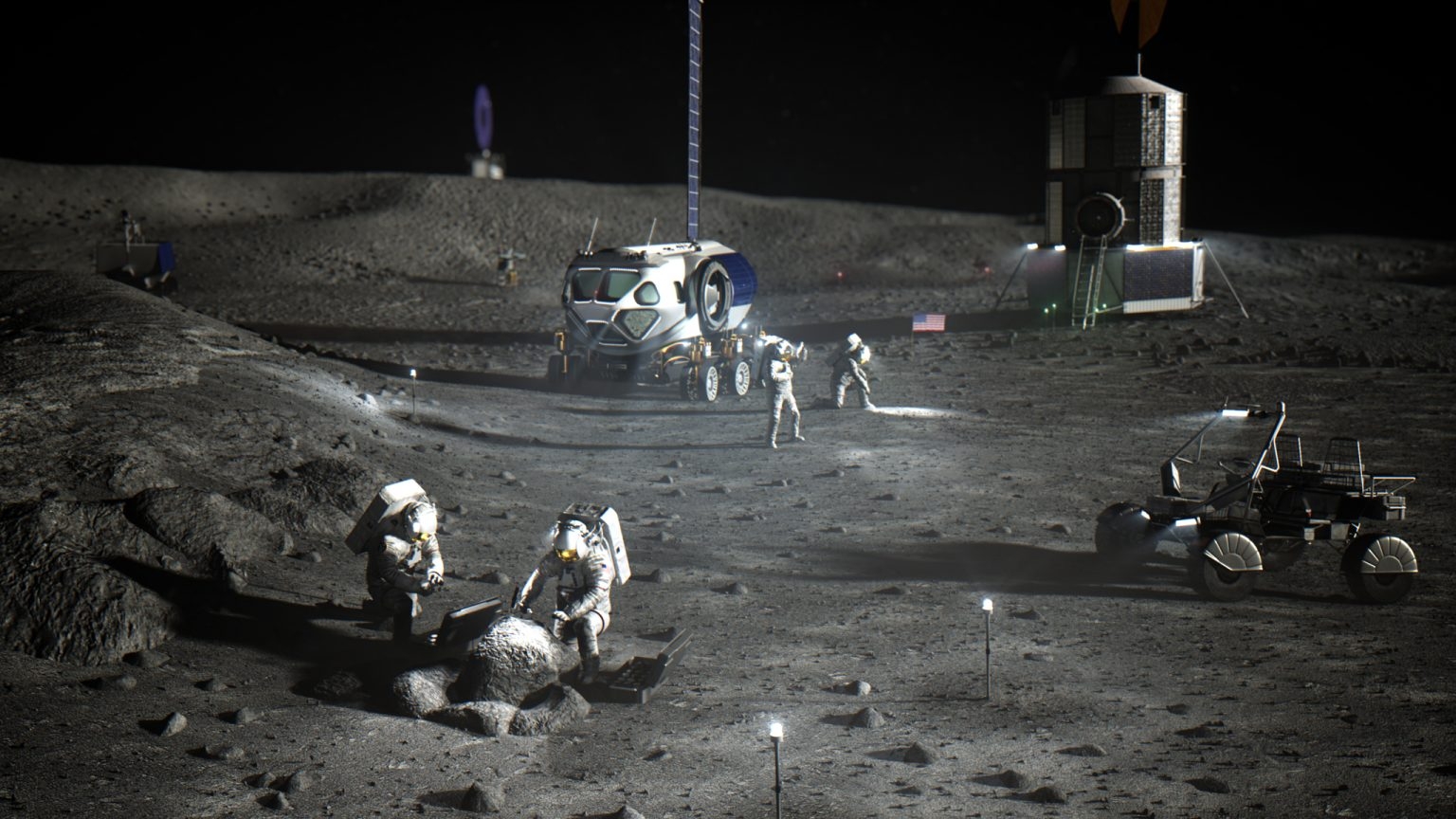See Stunning Photos of SpaceX Falcon Heavy's First Night Launch
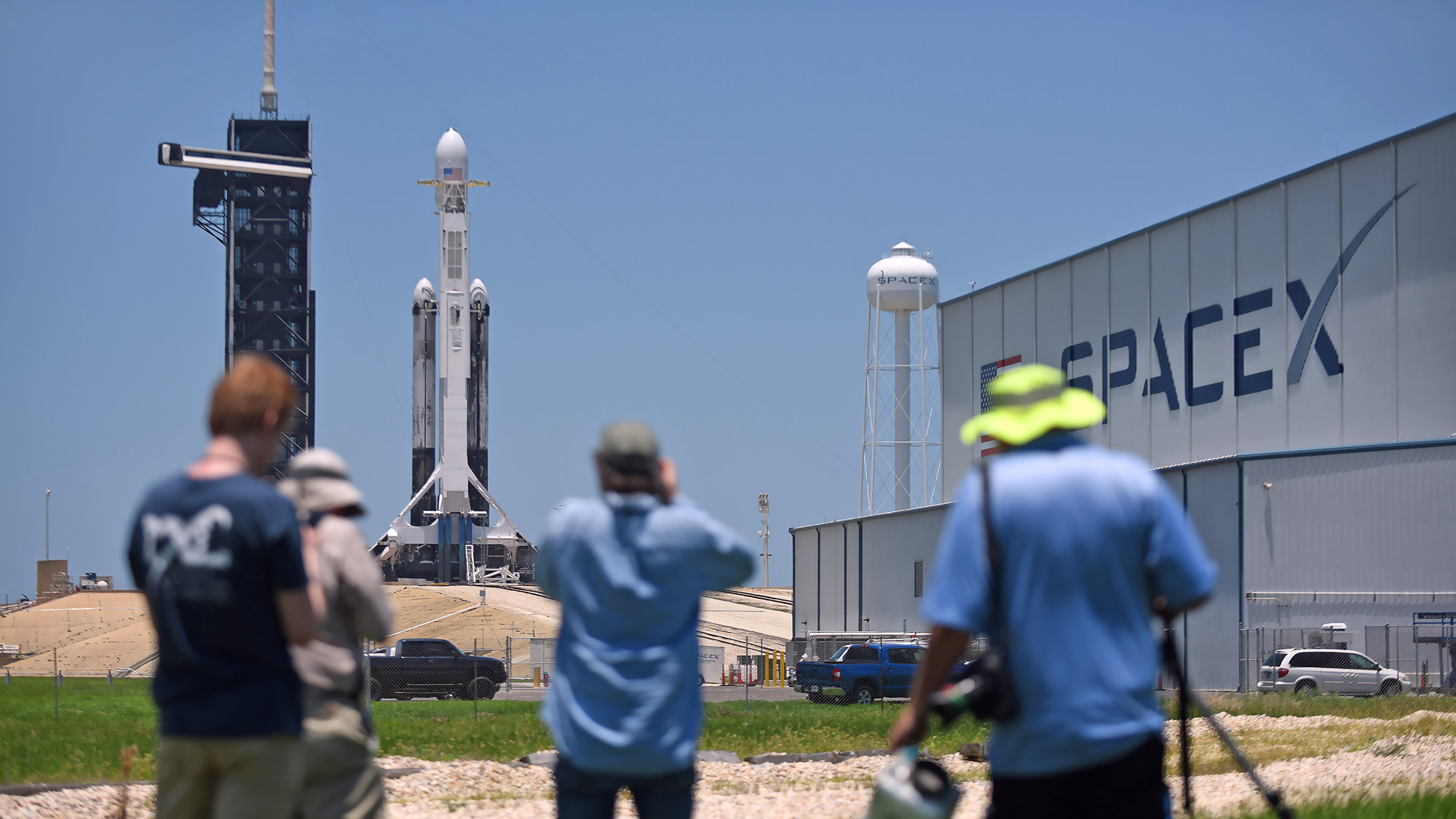
Recording History
Members of the media take photographs of a SpaceX Falcon Heavy rocket on June 24, 2019, as it stands on Launch Pad 39A at Kennedy Space Center in Florida. About 12 hours later, the rocket blasted off in the Falcon Heavy's first multi-payload mission.
Full story: SpaceX Falcon Heavy Rocket Lofts 24 Satellites in 1st Night Launch
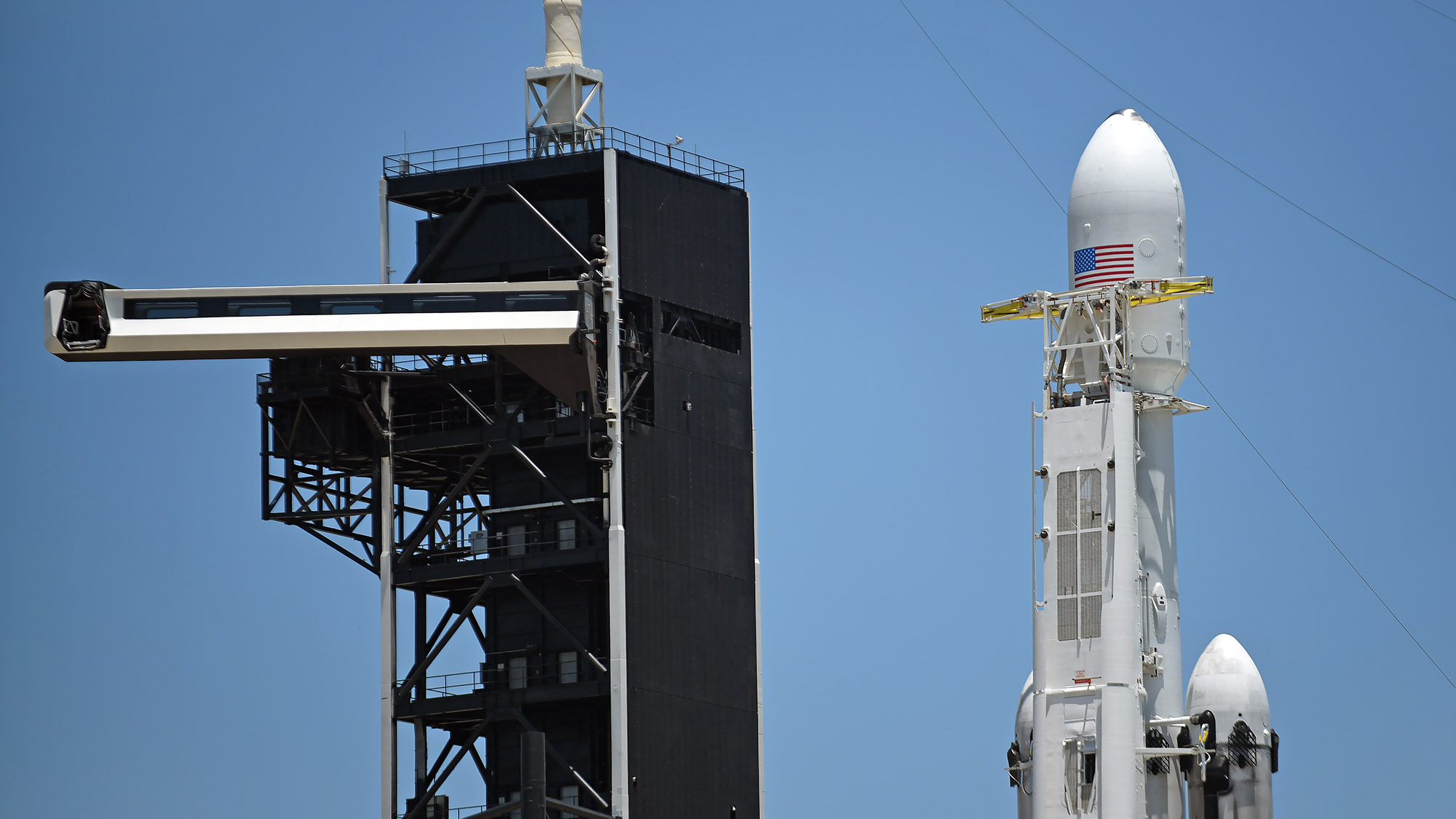
At the Ready
The SpaceX Falcon Heavy rocket carried two dozen satellites into space. Many of those payloads were under the purview of the U.S. Air Force. Four NASA satellites were also among the cargo.
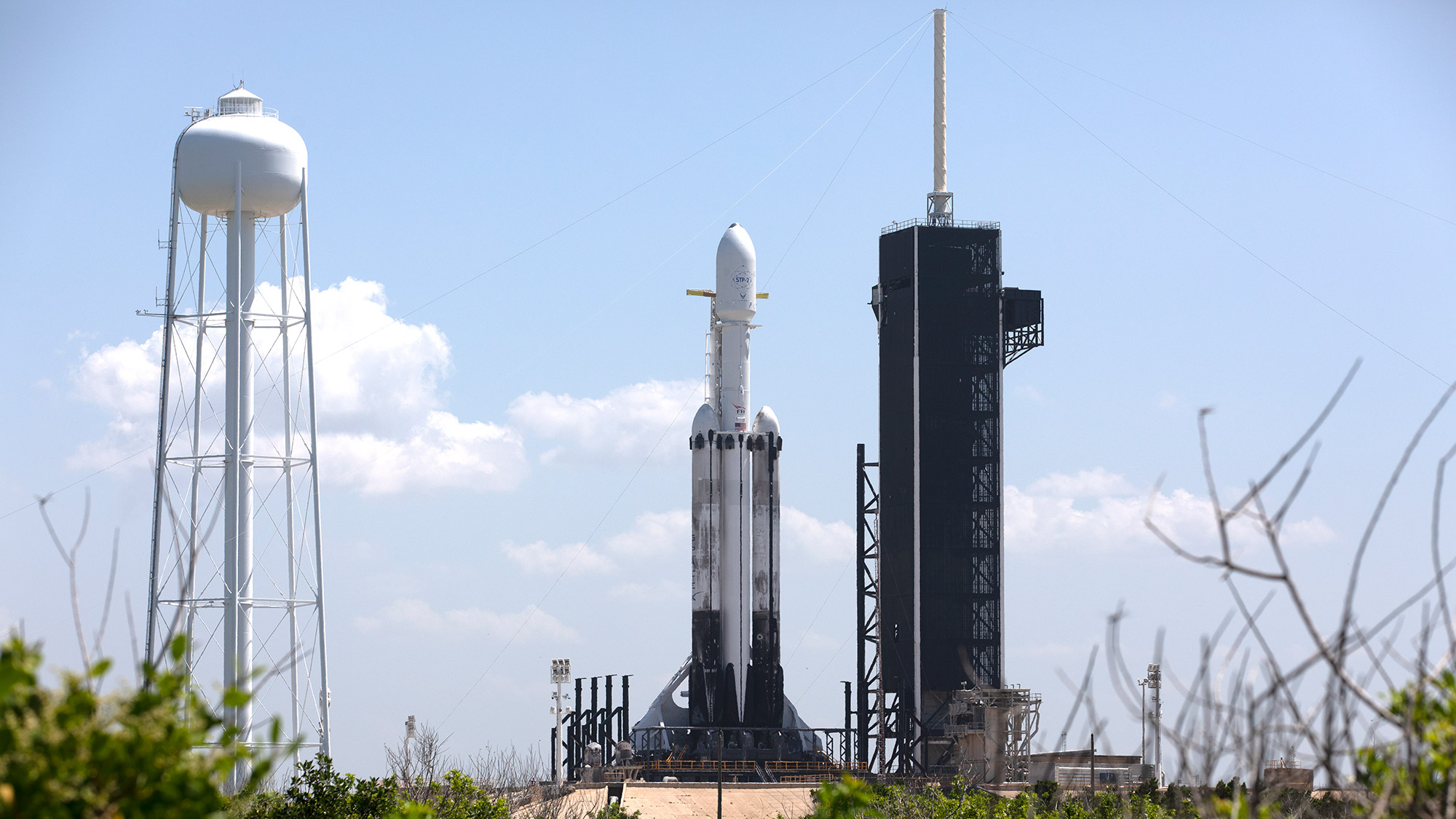
Standing Tall
The mission delivered its payloads into three different orbits, a difficult maneuver even for a powerful rocket. This was the first Falcon Heavy mission to rely on previously flown components, a key programmatic goal for SpaceX. The two side boosters appear sooty on the launch pad because they also carried the company's previous Falcon Heavy into space.
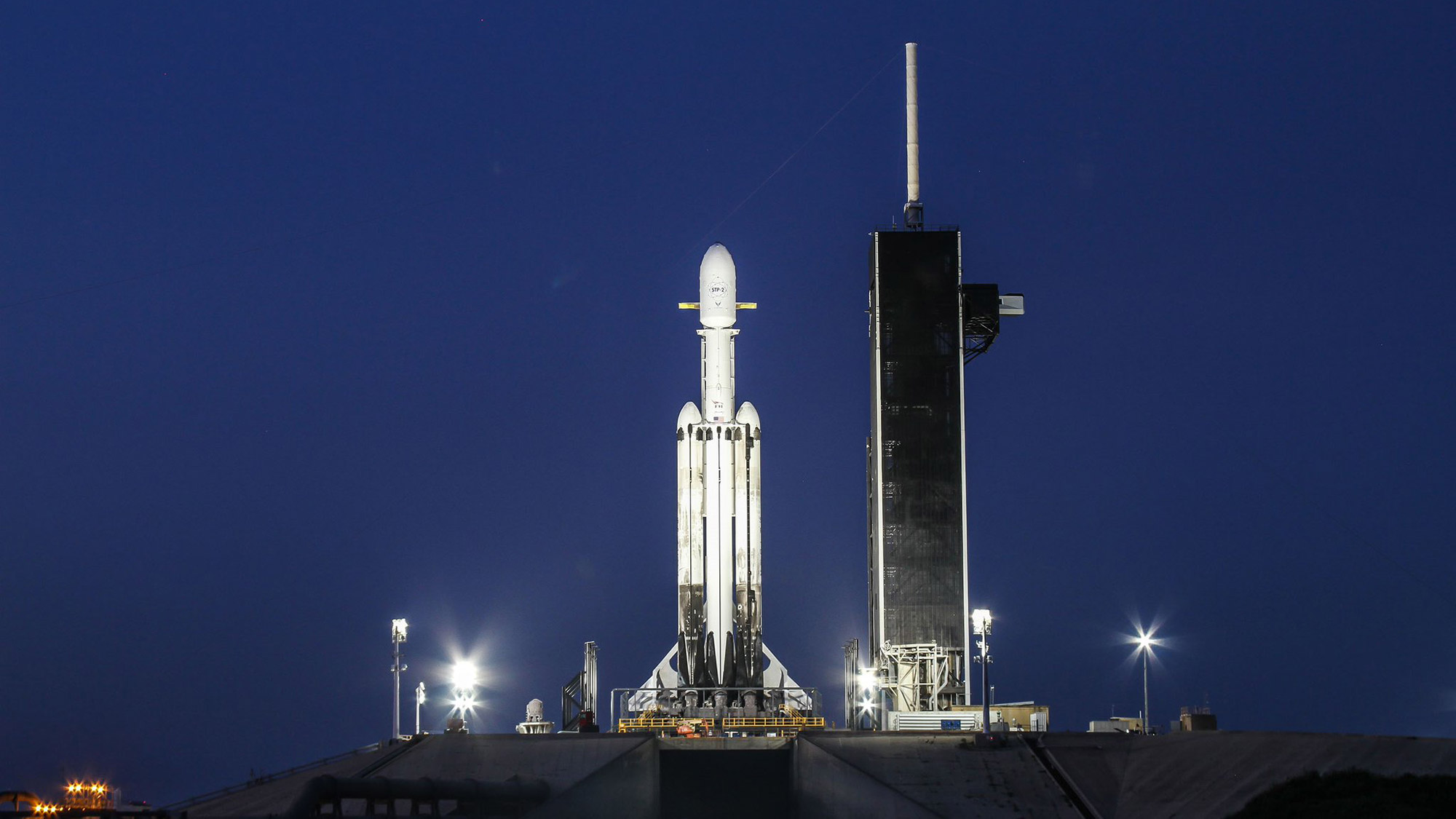
Magnificent Sight
The launch was just the third flight for the vehicle, which first blasted off in February 2018 on a demonstration mission that lofted CEO Elon Musk's red Tesla into space. The rocket made its first commercial flight in April, when it lofted a large communications satellite called Arabsat-6A into orbit. Both those missions launched during the day, also from Kennedy Space Center in Florida.
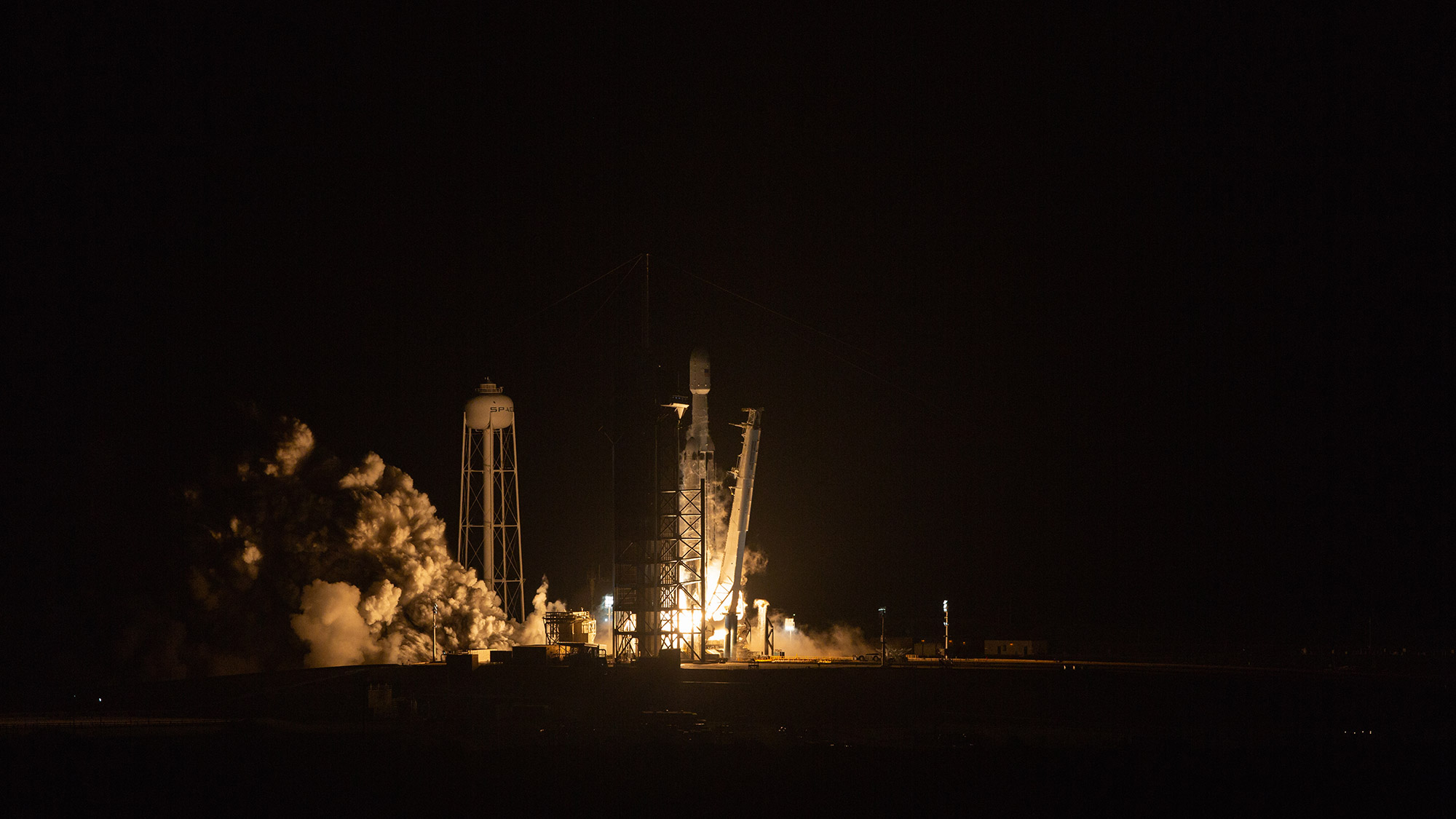
Blast Off
At 2:30 a.m. EDT (0630 GMT) on June 25, 2019, a successful lift off carried a SpaceX Falcon Heavy rocket up and away from Launch Pad 39A.
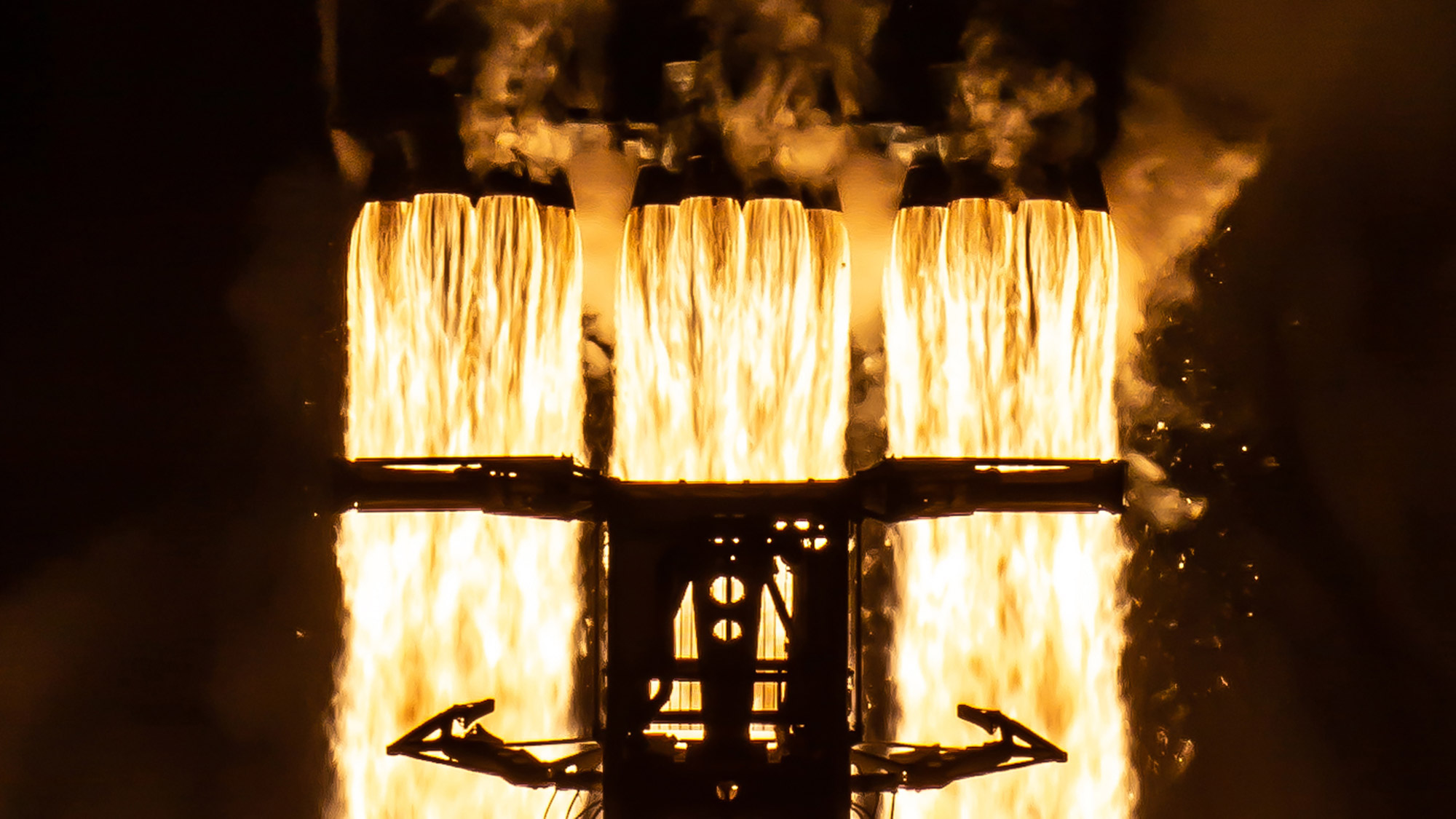
Uber Amounts of Power
Boosters on a SpaceX Falcon Heavy blast at full power to raise the rocket and its payload into orbit. A Falcon Heavy rocket is essentially comprised of three of SpaceX's Falcon 9 rockets strapped together.
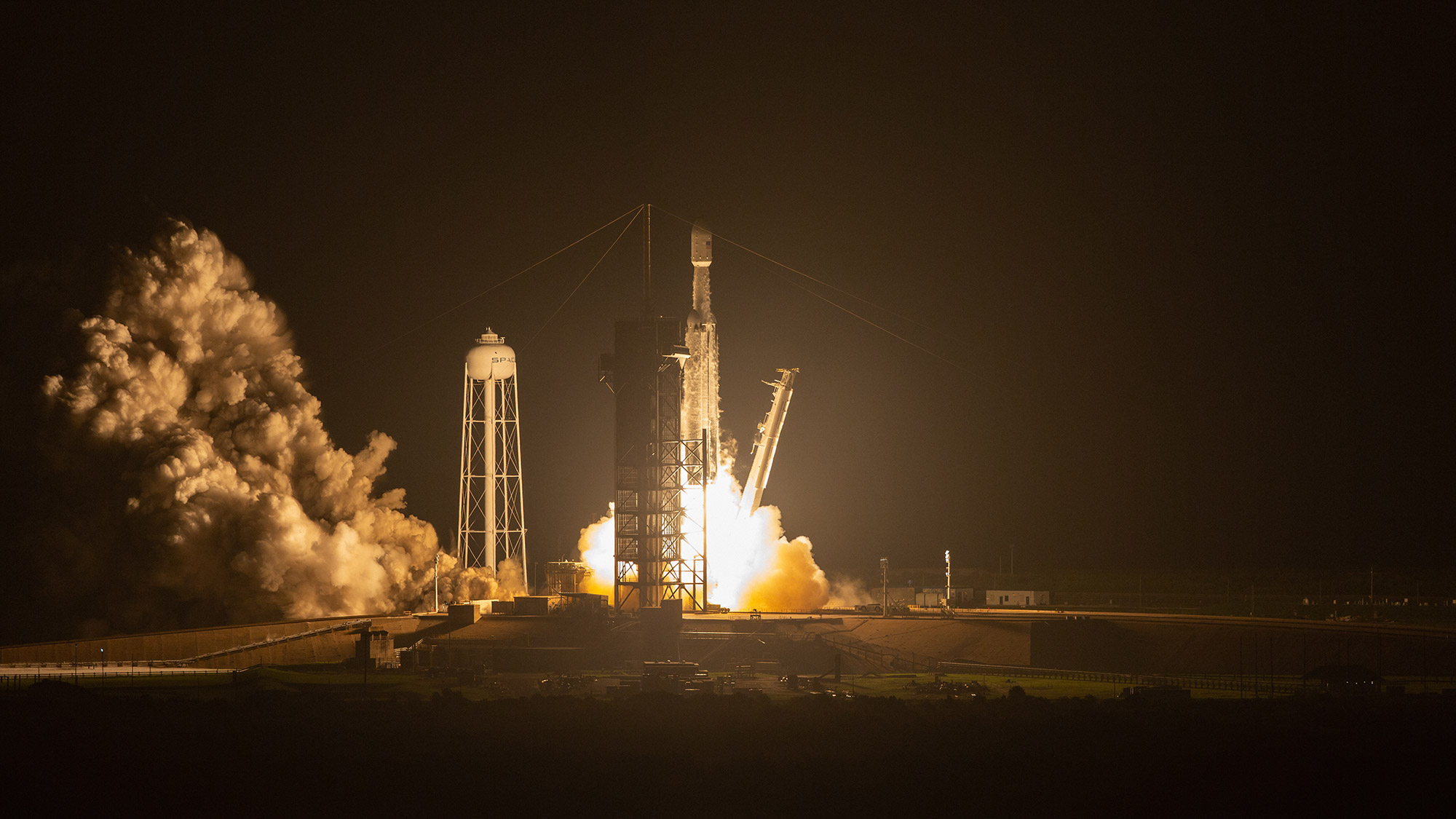
Leaving the Launch Pad
The SpaceX Falcon Heavy rises from Launch Pad 39A at Kennedy Space Center. Packed inside were four NASA payloads, including two technology demonstrations that focused on improving spacecraft navigation and kickstarting a more efficient chemical propellant. NASA also had instruments designed to help study the threat posed to satellites by charged particles that cause what scientists refer to as space weather.
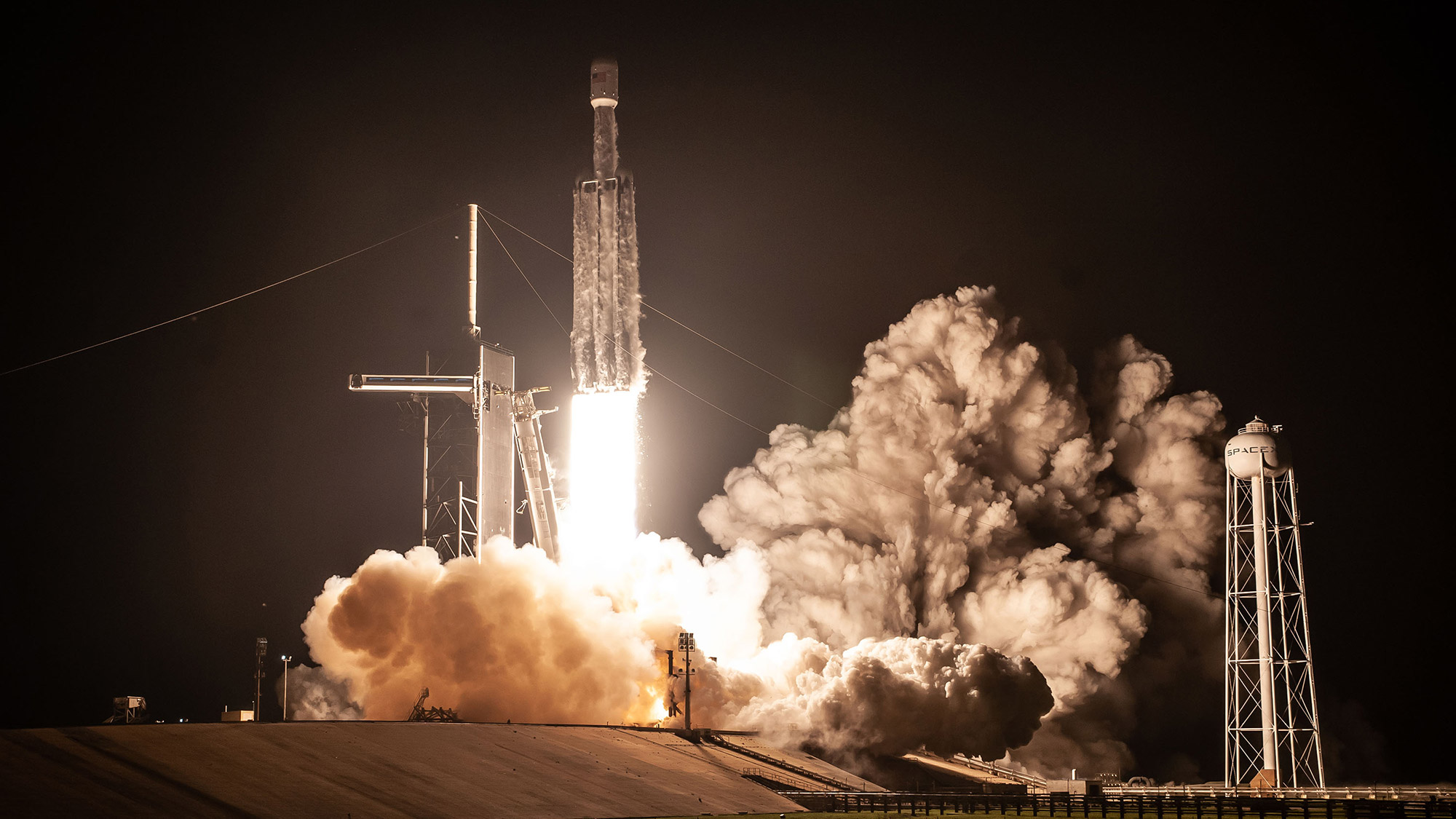
Kickin' Up Dust
Six satellites were the purview of the National Oceanic and Atmospheric Administration (NOAA) as part of a mission with the Air Force and Taiwan dubbed COSMIC-2. Those satellites will gather data about the temperature, pressure and moisture of the atmosphere near the equator.
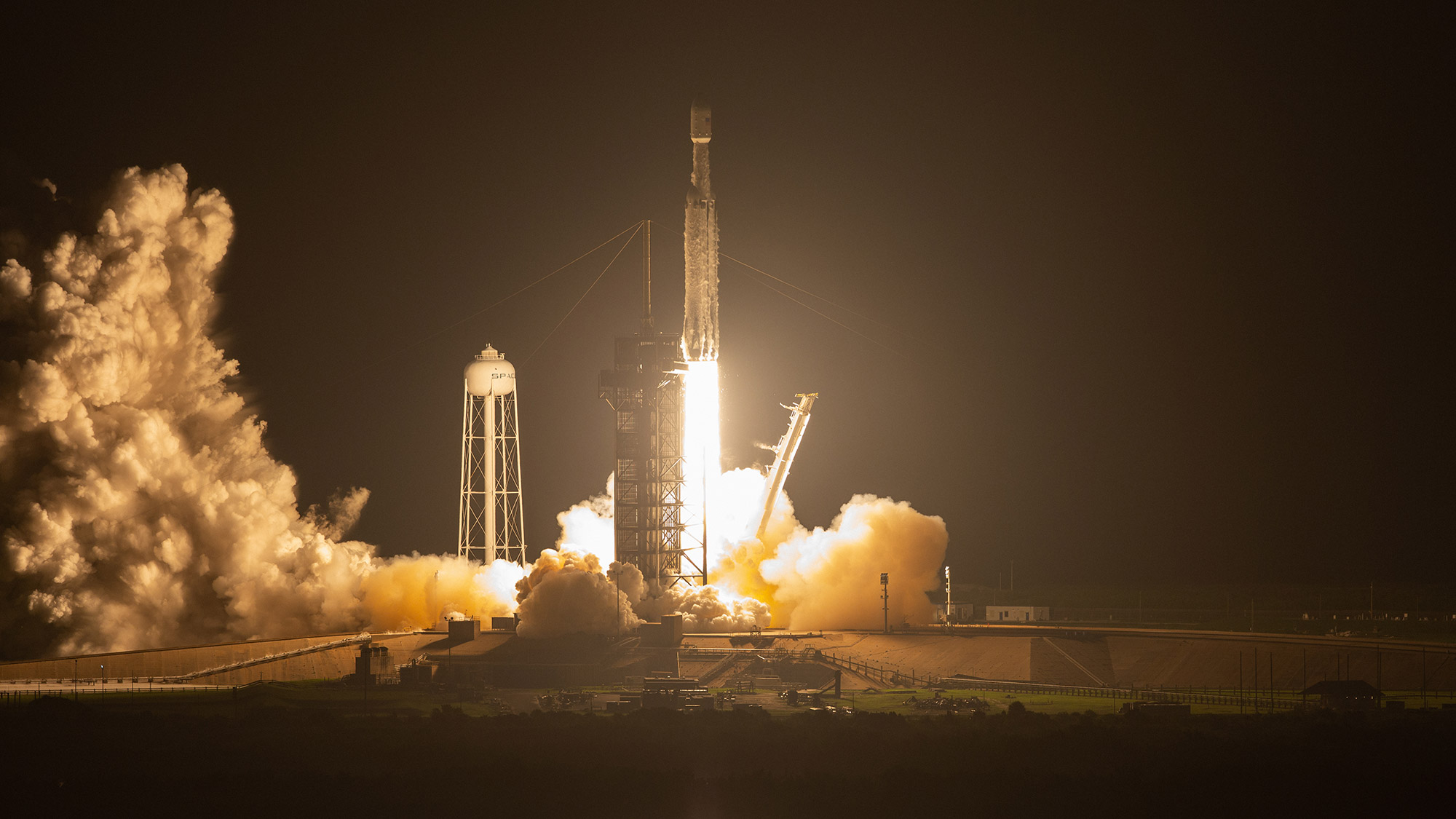
Ready to Test Space
Also on board was a payload from The Planetary Society, a nonprofit organization. Known as LightSail 2, it is designed to test the idea that small satellites can orbit Earth using just the push of the sun to maneuver.
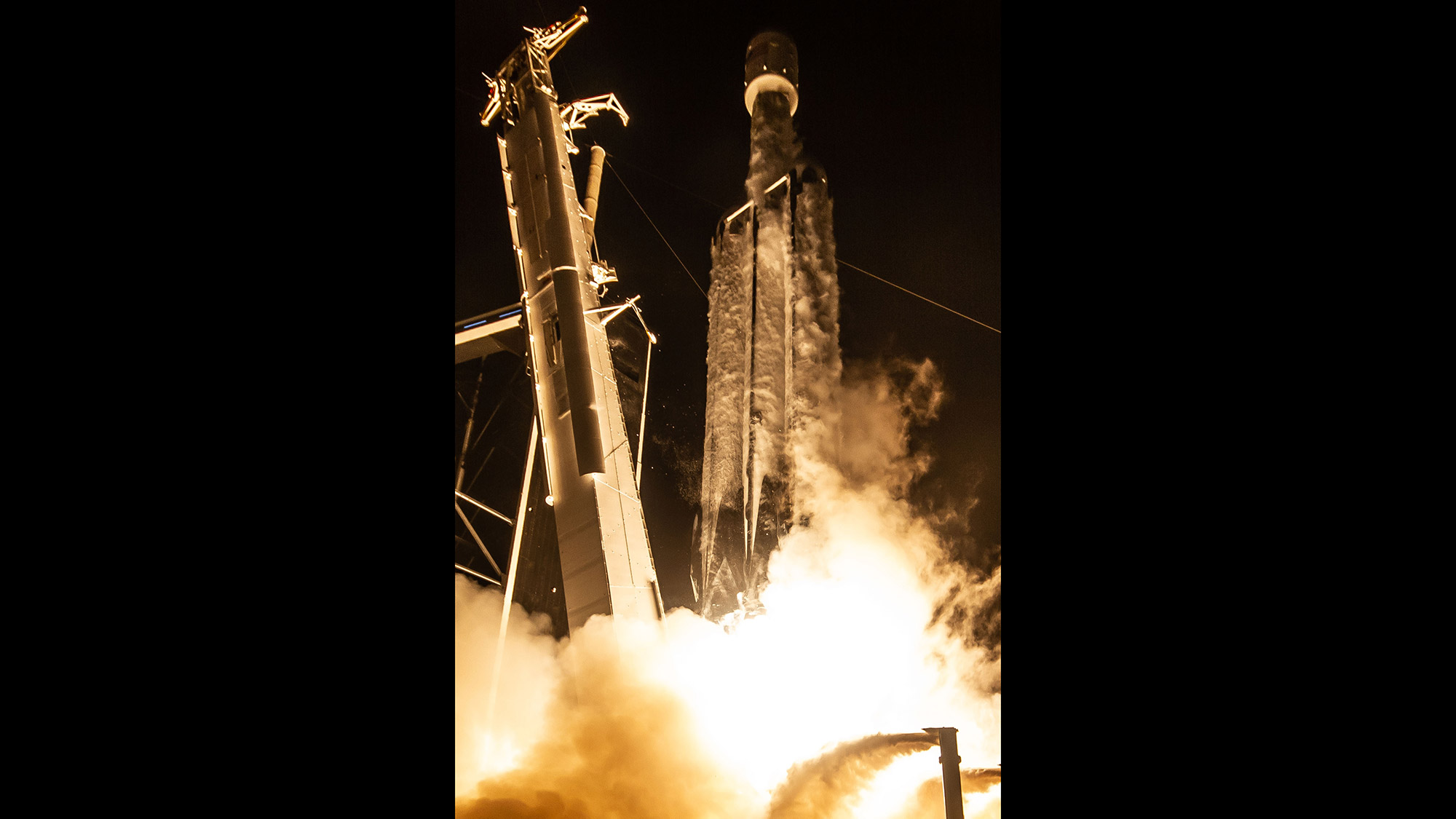
Falling Away
As the Falcon Heavy rises from Launch Pad 39A, unnecessary stands fall away from the rocket.

A Better View
A wider-angled image reveals billows created by the launch of a SpaceX Falcon Heavy rocket on June 25, 2019.
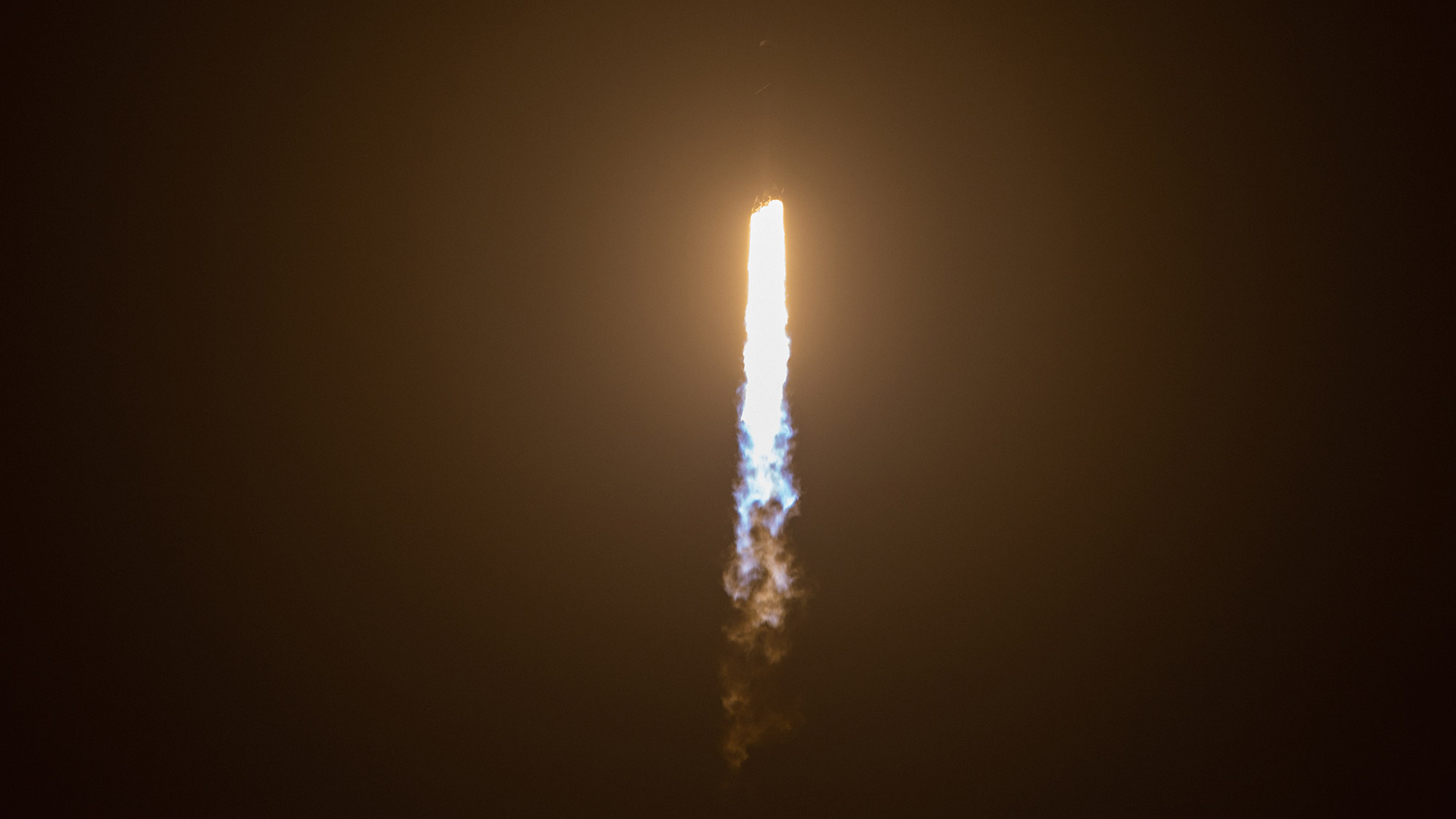
Bright Light in the Night
Brightening up the dark early morning sky, a SpaceX Falcon Heavy rocket launches from Earth.
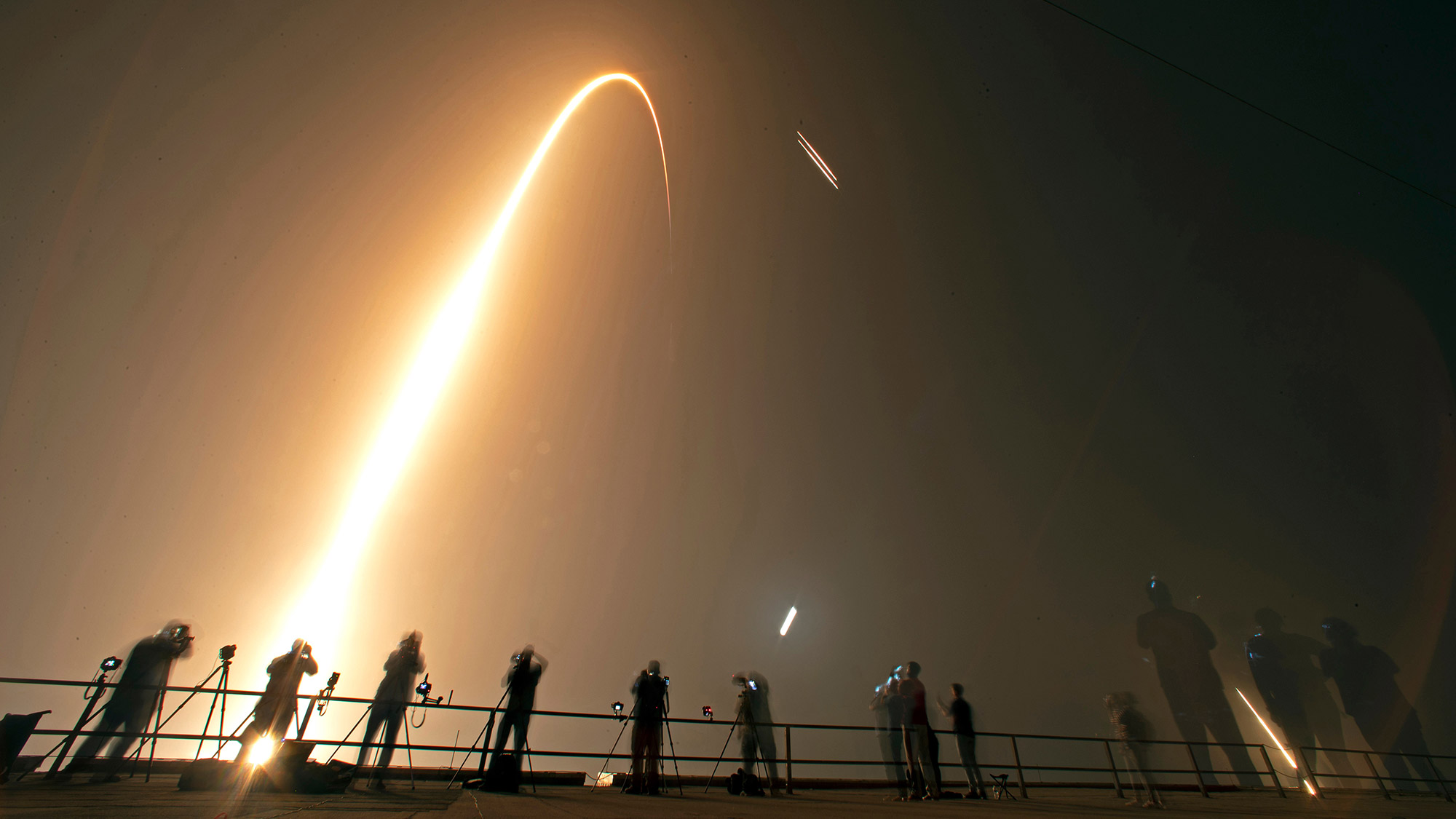
Stunning Sight
From atop the Vehicle Assembly Building of NASA's Kennedy Space Center, photographers collect magnificent images of a SpaceX Falcon Heavy as it launches from Launch Pad 39A and arcs through the night sky.
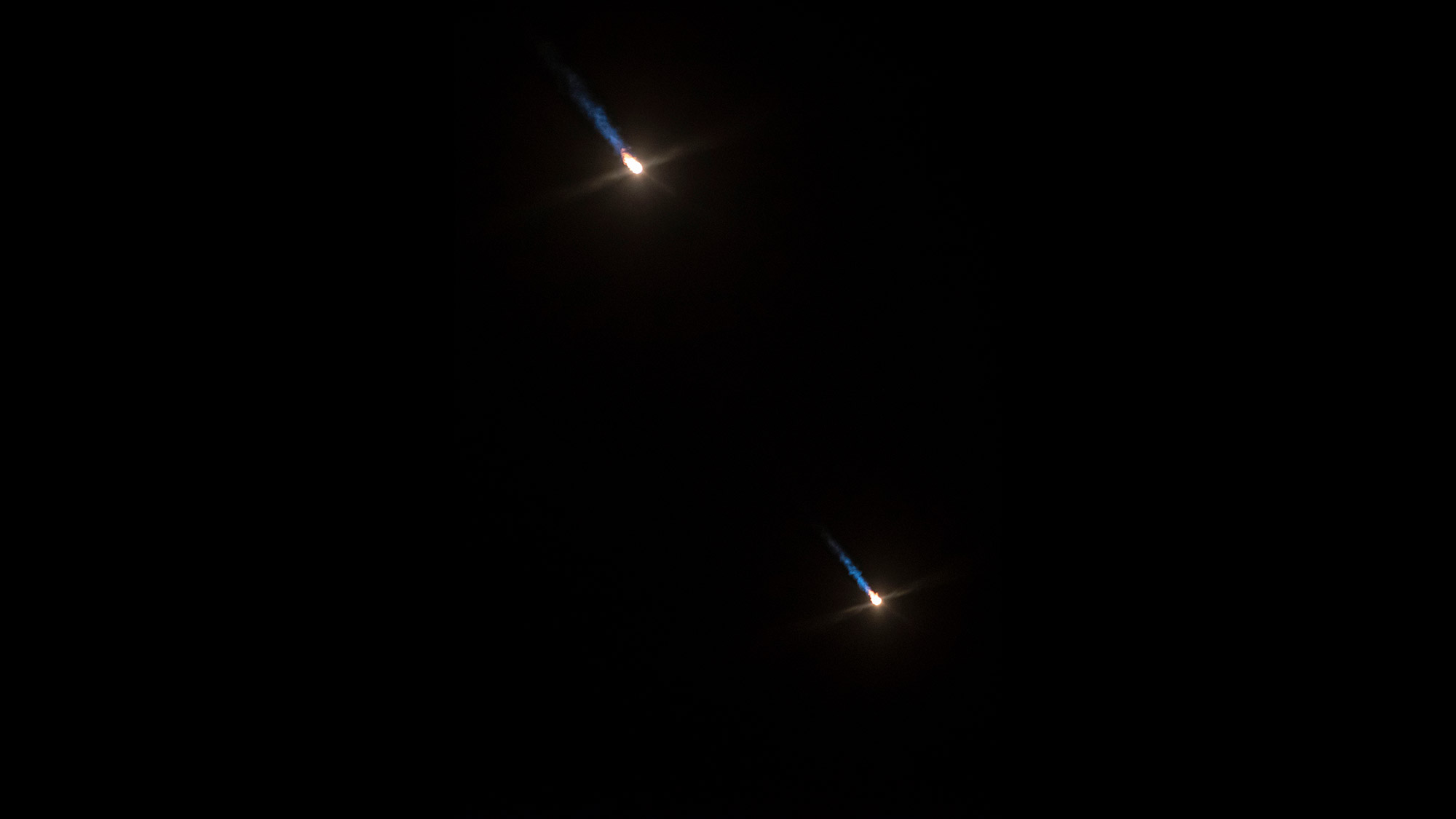
The side boosters of the Falcon Heavy, which had already flown in April, again made a perfect twin landing after the launch.
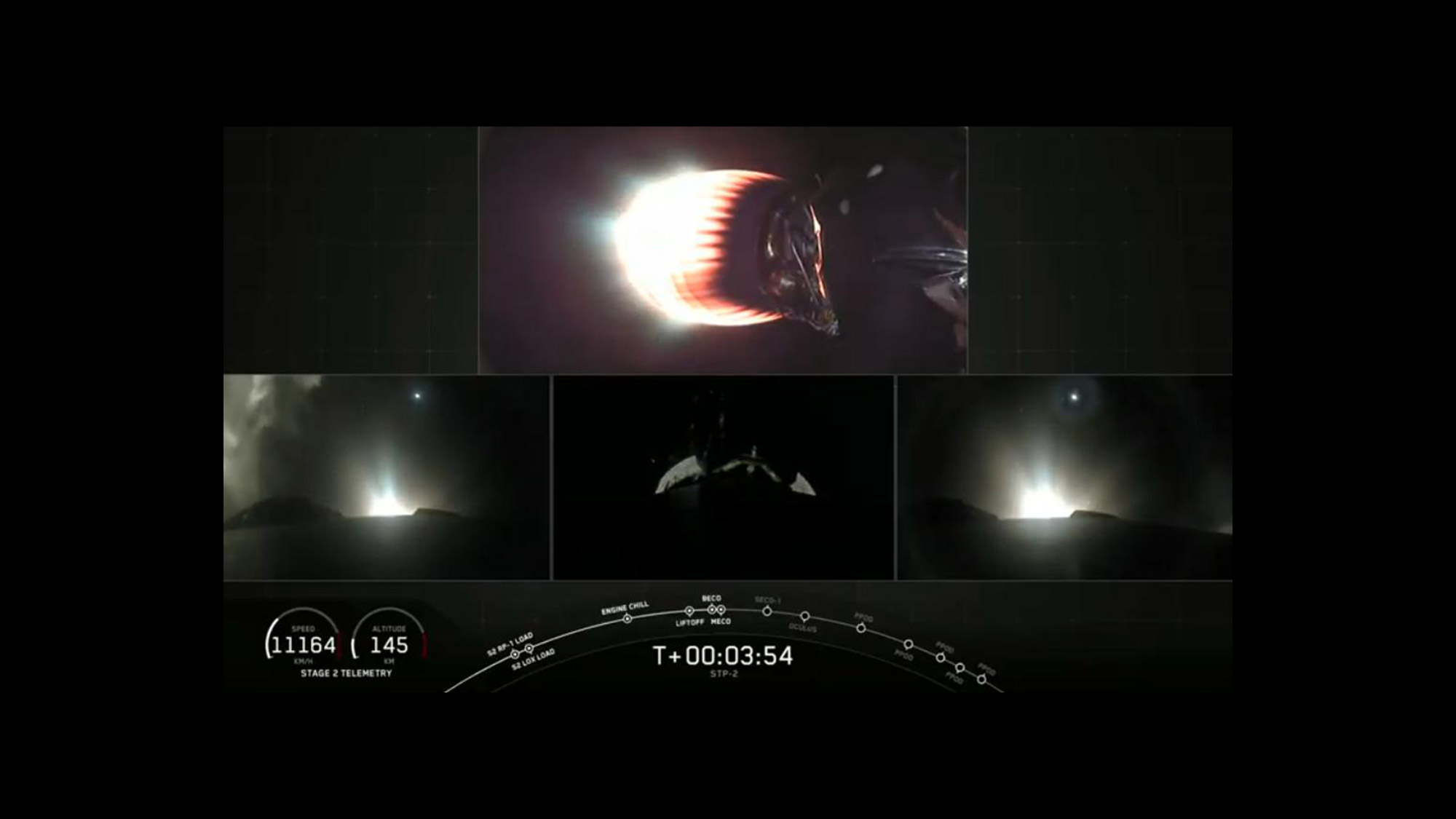
An Insider View
From onboard the SpaceX Falcon Heavy, video shows the center core engine shutdown and stage separation confirmed as the second stage engine burn begins. The complicated mission required four separate burns from the second stage engine to succeed in delivering 24 satellites to three different orbits.
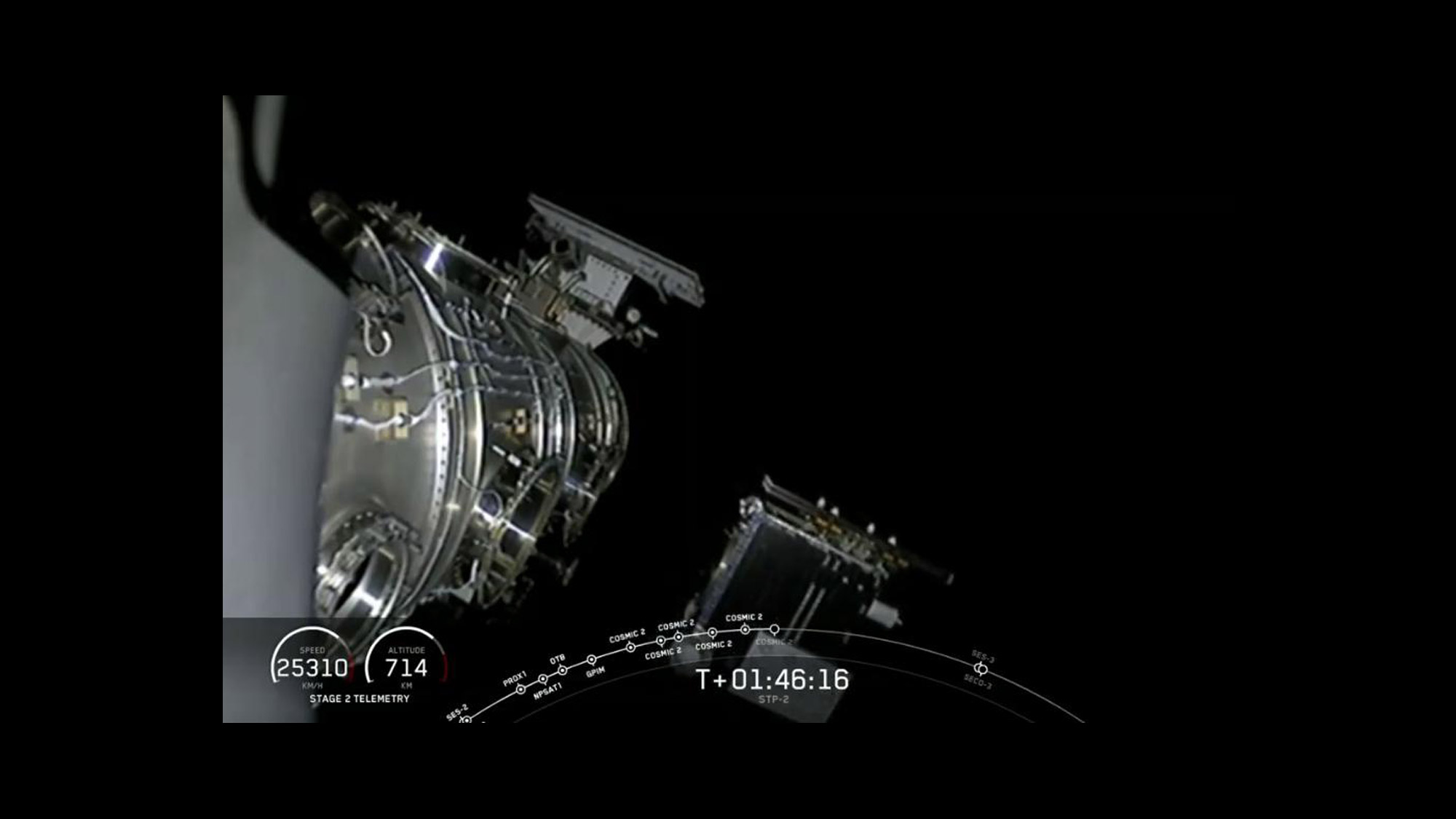
Deploying Begins
In orbit, deployment of the COSMIC-2 constellation of atmospheric satellites takes place as the second stage begins its coasting phase. The rocket's second stage later restarted to continue its journey.
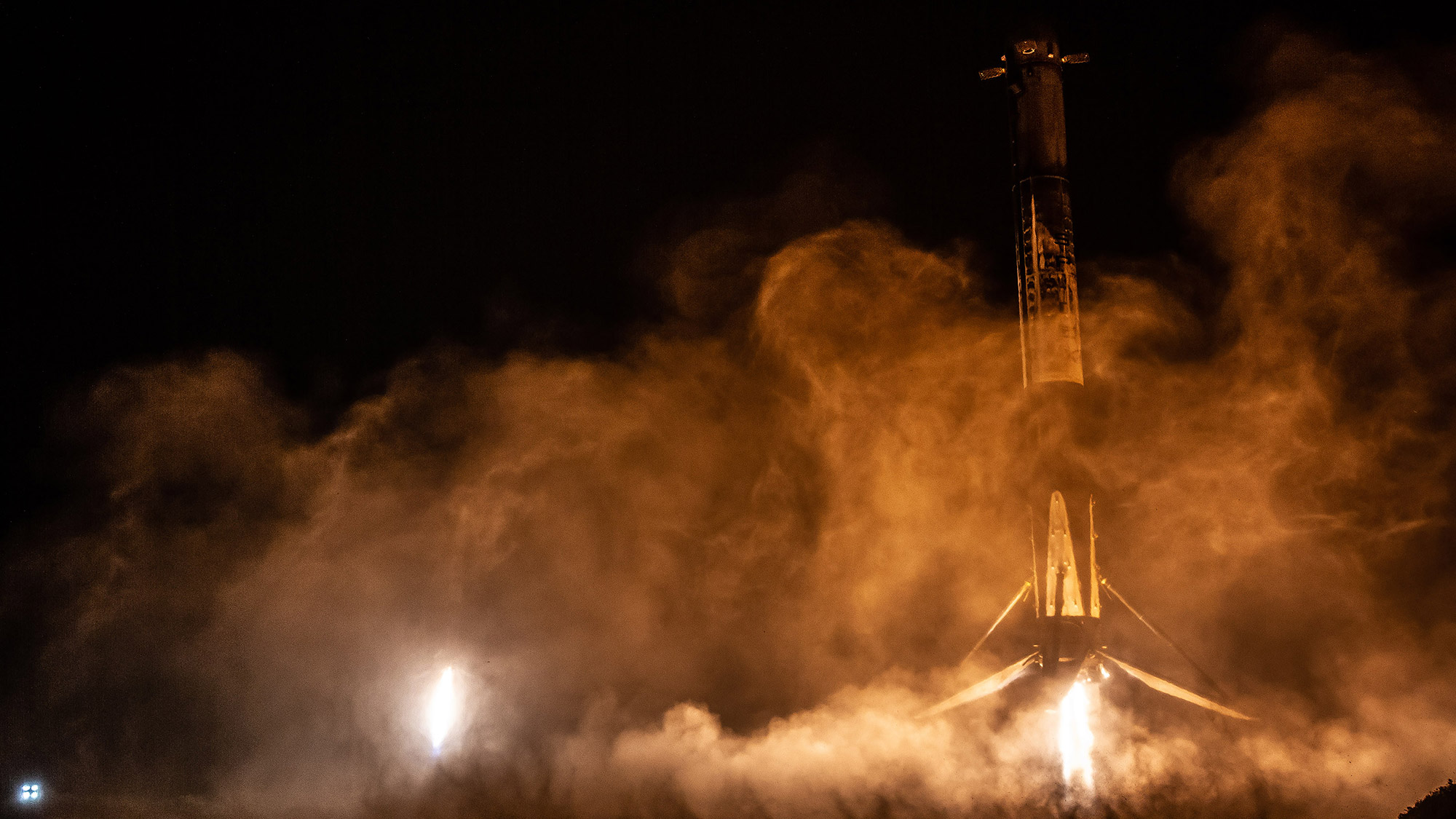
Back for More
Following delivery of the SpaceX Falcon Heavy and its payload to orbit, both side boosters returned safely to Earth to prepare for their next mission.
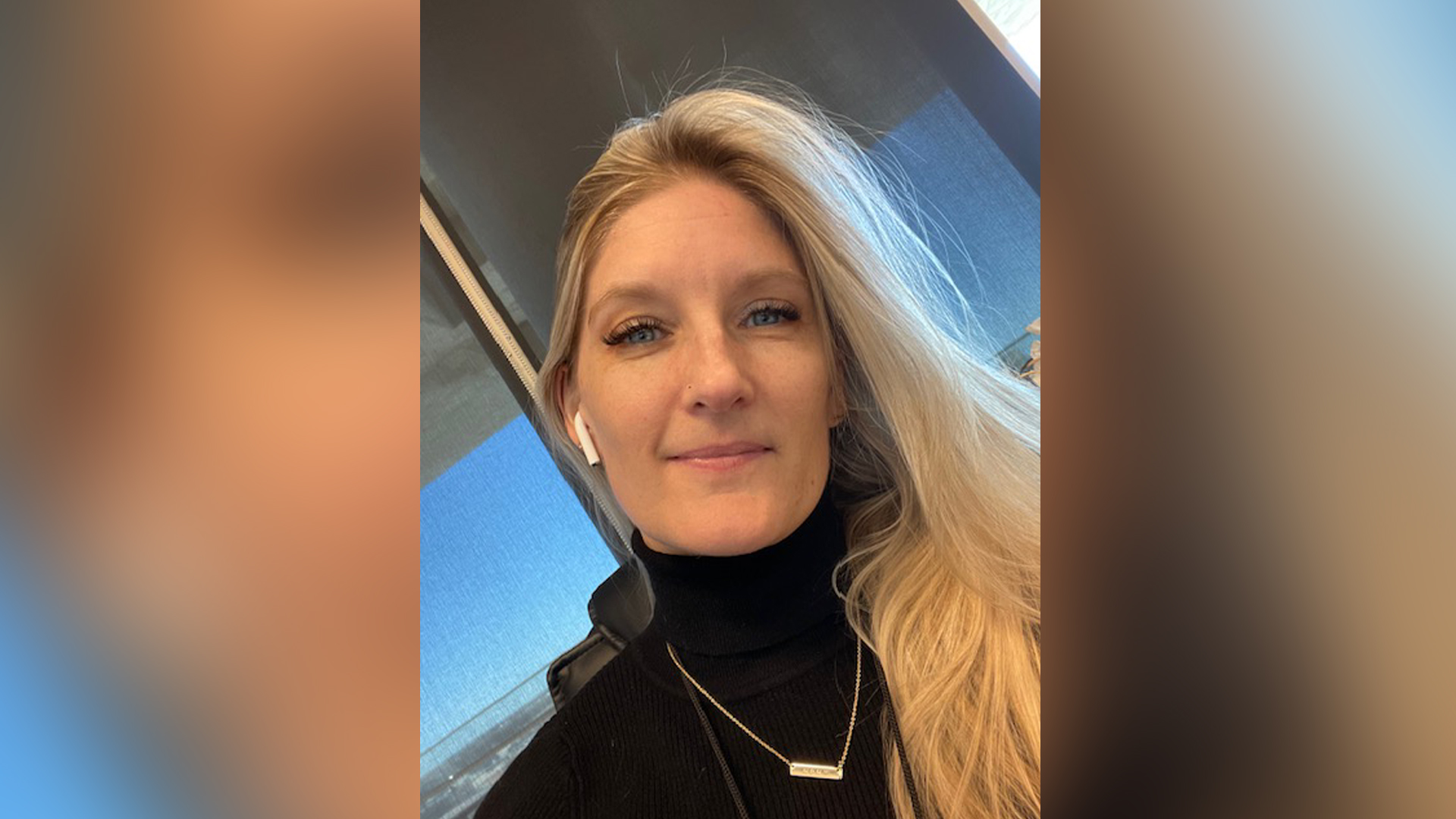
Christine Lunsford joined the Space.com team in 2010 as a freelance producer and later became a contributing writer, covering astrophotography images, astronomy photos and amazing space galleries and more. During her more than 10 years with Space.com, oversaw the site's monthly skywatching updates and produced overnight features and stories on the latest space discoveries. She enjoys learning about subjects of all kinds.
